Crazy ‘bout Curcuma
Last time in Tropical Topics, I mentioned a few tropical plants that were on the interior plant “hot list” of Dan Johnson from Tri-State Foliage. Dan’s “2019 Plant Trends” session at Cultivate’18 also included a few outdoor items, including curcuma—ginger! Dan is partial to the Torch series.
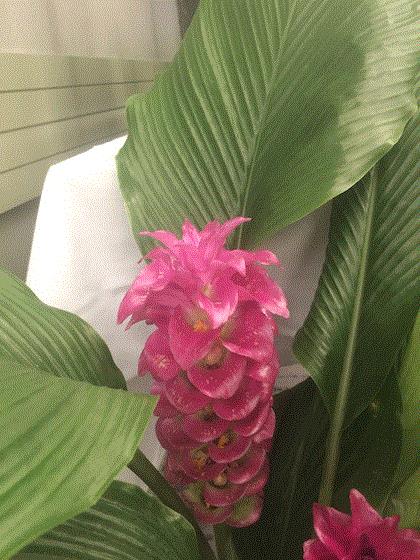
Here's the Torch variety Dan presented as a sample.
Why is it on the list? Because it’s a beautiful bloomer, August through October. Kind of late. People want color starting in spring! Dan says breeders are looking for a variety that blooms earlier to bring that gorgeous color into the garden earlier.
As it happened on my stroll through the Cultivate trade show floor, I spotted a few curcuma at the ForemostCo booth, including the aforementioned Torch series. ForemostCo has several breeding partners for their curcuma, including KP Holland. Here are a couple from KP’s Siam series:
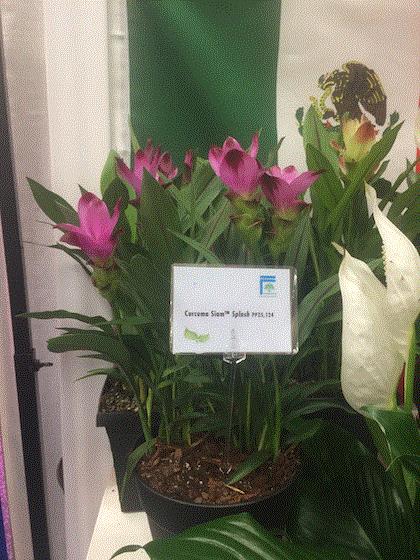
Siam Splash
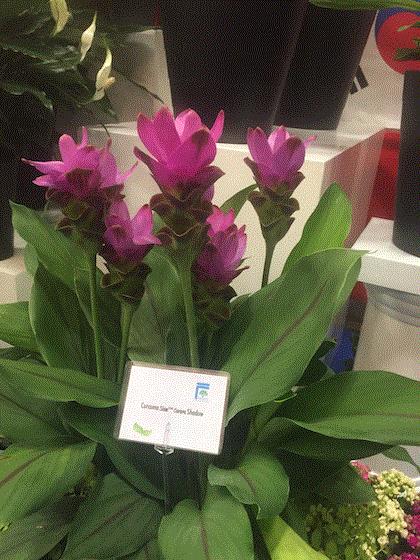
Siam Shadow
I’m told that one is more popular in Europe than the other. Which? I’ll let you know as soon as I get in touch with the person who first told me!
Another breeding partner is ARDA, the licensee for the Thai government and the research coming from Thai universities. They’ve brought about 20 new varieties of a curcuma hybrid to ForemostCo. They're crosses of eucurcuma and paracurcuma, giving the Sawadee and Chiadee series varieties long stems and even a few colors that are new to the category. Also, I’m told the color travels further down the inflorescence, giving the flower more pop.
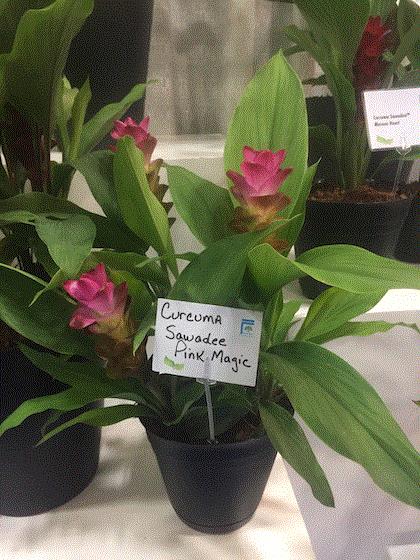
Sawadee Pink Magic
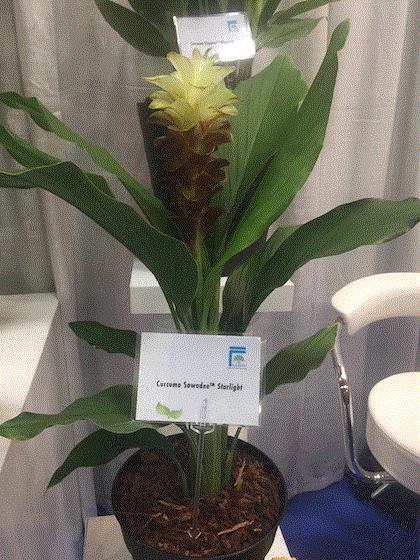
Sawadee Starlight
As the title of this section suggests, I’m a fan of all of them!

Succulents & Cactus
Dan Johnson also had succulents and cacti on his list, with cacti trending more “it” than succulents. The ones coming out of California are preferred—it’s the heat and dry, even temperature, that makes them that much better than those produced in humid Florida.
I was thinking of Dan’s comment about cacti and succulents as I passed by the Braun Horticulture booth. There’s something about this container design I just love and think goes really well with those trending plants.
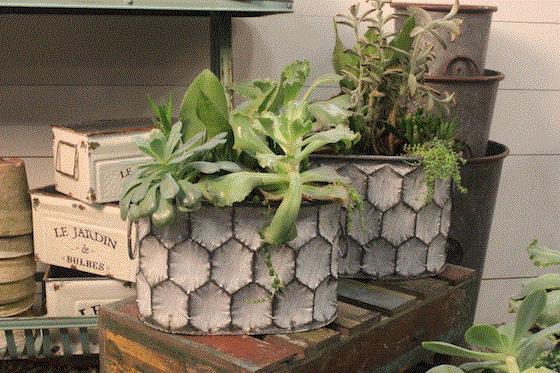
Maybe it’s the honeycomb pattern, the coloration, the size … I dunno, I just like it! And I think Chris Beytes does, too, because he took the same photo I did at a completely different time. He appreciates his containers—he has more than 225 potted up at this very moment.
The Houseplant Trend Hits the Ball Gardens
GrowerTalks’ Jen Zurko reports on how houseplants made an appearance at Ball Horticultural Company’s annual Customer Day:
Since the 1960s, “the cottage” has been a staple of the Gardens at Ball and it’s served many purposes—starting out as a photography studio and, most recently, serving as an historical display that paid tribute to significant Ball company milestones.
This year, Rachel Prescott, Production Manager for the Ball Gardens, wanted to do something a little different. To capitalize on the houseplant trend and to lend some inspiration to the growers and retailers that visit the Gardens, Rachel transformed the one-room cottage to an urban studio apartment, complete with modern furniture, color scheme and loads of indoor plants.
“I wanted something to display the tropicals, succulents and houseplants that Ball Seed sells, but we don’t have displayed anywhere else in the Gardens,” explained Rachel.
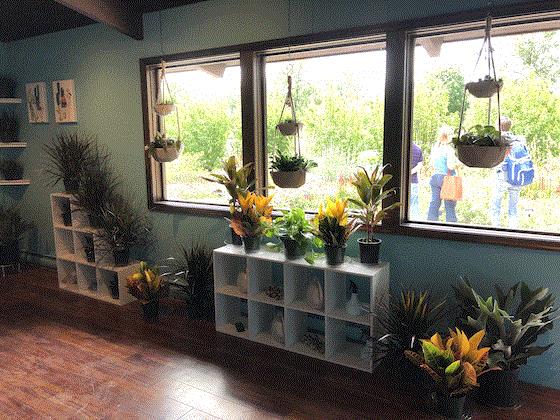
First, the walls got a fresh coat of paint (Sherwin Williams Rapture Blue). Then Rachel got to work doing research, finding a lot of ideas from jungalow.com—artist and designer Justina Blakeney’s home décor website that shows what you can do to transform any room in the house with some color, interesting patterns and lots of plants.
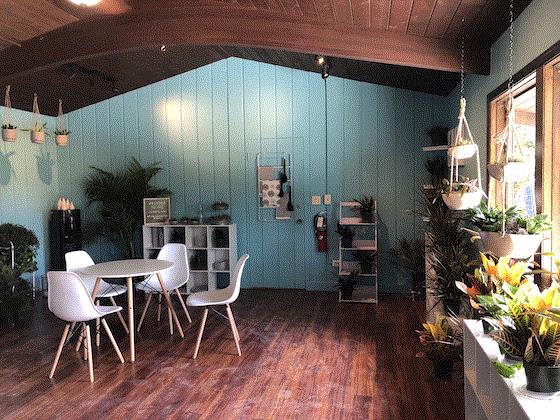
Ready with furniture, some shelves, plants and a plan, Rachel created an idea-space for what you can do for a small living room and kitchenette. And it was a pretty popular display during Ball’s Customer Day last Friday, as was evidenced by all the footprints on the floor from people who wandered in to check it out.
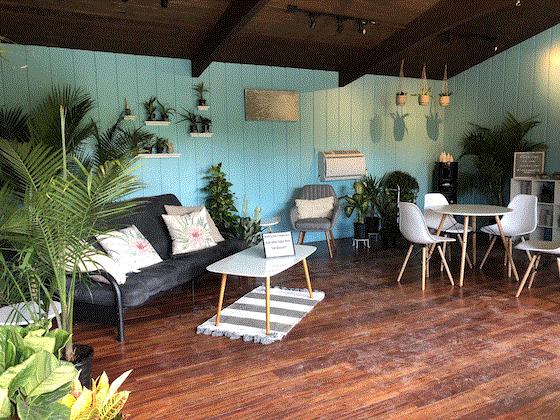
“I wanted to show different ways to use plants of all sizes,” said Rachel. “That it can be more than just a small pot on a table.”

Calathea In a Coalmine
They used to carry canaries into coalmines to see if the air was safe to breathe. Could houseplants be the future canary-like air testers for the indoor environment? My boss Chris Beytes came across an interesting article in the July 20 issue of Science in which three folks at the University of Tennessee proposed that very question.
“Houseplants are ubiquitous in our home environments,” says Professor Neal Stewart, a plant scientist. “Through the tools of synthetic biology, it’s possible for us to engineer houseplants that can serve as architectural design elements that are both pleasing to our senses and that function as early sensors of environmental agents that could harm our health, like mold, radon gas or high concentrations of volatile organic compounds.”
The indoor plants (he calls them plant biosensors) could be designed to react in some way to harmful elements, such as by changing color or perhaps activating some sort of fluorescence. Rana Abudayyeh, an article co-author and a professor in UT’s College of Architecture and Design’s School of Interior Architecture, says, “Biophilic design builds on our innate affiliation with nature, so integrating biophilic elements within the interior volume carries rich implications spatially and experientially. Building responsive capabilities into interior plants is revolutionary. It allows biophilic elements within space to assume a more integral role in the space, actively contributing to the well-being of the occupant holistically.”
While this is just in the early concept stages, I believe I may have gotten my hands on a “plant biosensor.” My spath’s leaves are turning yellow. Must be radon!
Finally …
(And I mean that in the “taking its last breath” sense.) Houseplants are trendy, yes, but not everyone loves them. I suspect that the person who put together THIS VERY STRANGE SLIDESHOW is one of them. Its premise is that “everyone’s favorite” houseplant—pothos—really just wants to give up the ghost and die.
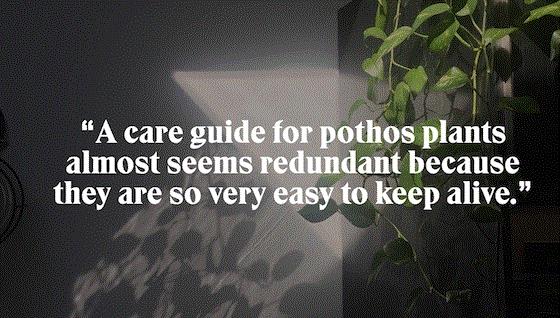
It’s one of the darker plant-related items I’ve read of late—and one I'm not quite sure I agree with. But do give it a read (it’s a series of slides that scroll downward) and LET ME KNOW your thoughts. Do pothos plants really want to pass away?
Comments, questions or news to share? Just drop me a line at ewells@ballpublishing.com.

Ellen Wells
Editor-at-Large
Green Profit
This edition of Tropical Topics was sent to 26,967 loyal readers!
If you're interested in advertising on Tropical Topics contact Kim Brown ASAP!